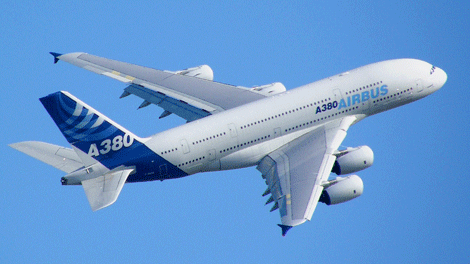
Airbus has worked with Imperial College London to develop more accurate analysis models for its use of composites
New computer codes have allowed developers to create a computer model that accurately predicts how composite materials behave when damaged, making it easier to design lighter, more fuel-efficient aircraft.
Developed by researchers at Imperial College London working with partners, Airbus, and with funding from the Engineering and Physical Sciences Research Council (EPSRC), the model is capable of showing details how an aircraft composite wing, for instance, would behave if it suffered small-scale damage, such as a bird strike.
In addition, any tiny cracks that spread through the composite material can be predicted using the model.
To date, aircraft designers have overcompensated for a lack of knowledge of how composites behave by over-reinforcing composite panels. The Boeing 787, for example comprising 50 per cent composites, is about ten per cent overweight.
The new model will enable panels to be made less bulky while still meeting stringent safety margins demanded by the aviation industry. The result should be aircraft that are lighter than current designs and so use less fuel and produce fewer greenhouse emissions.
“Up to eight per cent of jet fuel could be saved via weight reduction. Excluding military aircraft, this amounts to about 20 million tonnes of fuel, 50 million tonnes of CO2, and £20 billion saved annually,” said Dr Silvestre Pinho, who led the research at Imperial College London.
“One key challenge in designing with composites is that while the physical mechanisms leading to damage develop at a tiny scale, models predicting these mechanisms need to be applied to much larger components.
“Nowhere is this challenge greater than in the aerospace industry. I’ve been fortunate to work closely with Airbus and other companies not only to improve understanding of these mechanisms but also to develop models than can be applied to large components,” concluded Pinho.
Composites are proving increasingly popular in the aerospace industry. They are not just lighter than the metals they are replacing, (for example 20 per cent lighter than aluminium), but also stronger.
However, the failure mechanisms affecting them are not as well understood because the industry has several decades more experience using metals.
The new model addresses this problem, with the codes it contains incorporating a range of new insights developed by the Imperial team. In particular, the team’s detailed experimental investigations into different failure mechanisms have enabled damage to be represented for entire aircraft parts.
Dr Morten Ostergaard, Airbus senior expert in structure modelling and non-linear finite element analysis, says: “We’ve been collaborating with Dr Pinho over a number of years on the development of models for failure of composite structures. This is a very challenging area and these models constitute a positive contribution to our capability to predict damage in large components.”
No information on whether the coding or model will become wider available has been given.






